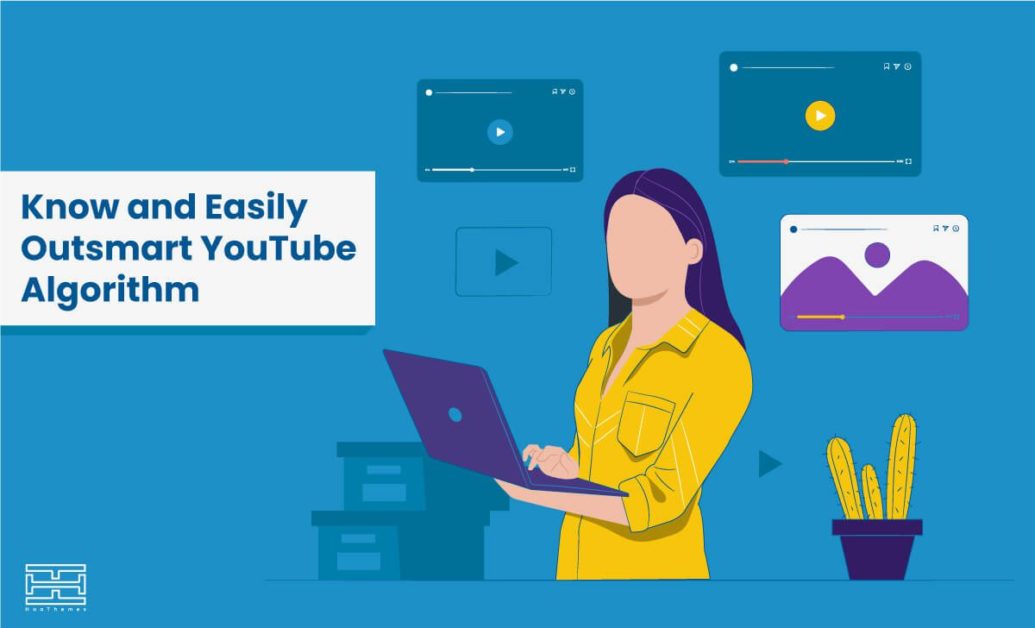In this post, we will focus on how the YouTube algorithm exactly works. With 720,000 hours of videos uploaded daily on a wide range of topics, many content creators wonder how they can stand out amid all the noise and fierce competition. To get more video views and subscribers in the long term and make the best out of YouTube monetization, you need to learn a few things about the YouTube algorithm. Creating content that appeals to the masses requires practice and a deep understanding of the particular science and mechanism behind it.
When you upload a video, the YouTube algorithm starts working to determine the quality of the content. But how does it evaluate your content? Which metrics or factors are influential in this evaluation? And how can you optimize your content to work with it, not against it? In this article, we will try our best to get these queries answered. If you are interested in a concrete understanding of how the YouTube algorithm suggests videos to achieve more subscribers and viral moments on the platform, continue reading this post.
Boost your social media knowledge: Instagram Insights Explained [Views, Reach, Impressions]
What is the YouTube Algorithm?
The YouTube algorithm is the computerized recommendation system designed to find videos for viewers rather than viewers for videos. Therefore, when working with the YouTube algorithm, always remember that the algorithm follows the audience. When a user visits the platform, the YouTube algorithm suggests videos and ranks the best candidates according to what that user is most likely to watch. It aims to help each viewer find videos interested in and maximize long-term viewer satisfaction to ensure their return and engagement.
- The YouTube algorithm influences search results. The algorithm looks at the video’s overall engagement, including likes, comments, and the amount of time spent watching.
- The YouTube algorithm influences recommended videos.
The YouTube algorithm recommends to users what they need to watch on YouTube. According to the Pew Research Center, %81 of American users say they watch the videos recommended by the algorithm. Moreover, YouTube’s Chief product officer mentioned that %70 of watch time on YouTube is spent watching videos the algorithm recommends. YouTube reports that in 2021, homepage and suggested videos are usually the top sources of traffic for most channels. So, nothing irrelevant there.
Boost your social media knowledge: How to Use Instagram Live [A Complete Guide]
What Are the Crucial Metrics in the YouTube Algorithm?
The YouTube algorithm has gone through several changes over the years, leaving creators and brands confused, wondering why the content strategies they once relied on aren’t working anymore. Remember that the algorithm is constantly in flux, improving and adapting in an ongoing mission to define better and satisfy user engagement. For example, in 2011, the number of clicks and views was the top-ranking factor. In 2012, however, watch time became more relevant. From 2015 to now, the most influential factor has been viewer satisfaction. So the center of attention has changed from click rate to watch time and Audience retention rates. As a result, the algorithm measures success through the number of views and time spent watching. Ranking videos based on total clicks and views proved inadequate because it led to an abundance of clickbait with misleading titles and thumbnails.
Nonetheless, as the algorithm evolves, YouTube’s goal is still the same: To get more users watching and engaging with more videos on YouTube. There are crucial and numerous metrics to rank videos for YouTube recommendations. While YouTubers can only influence some of these metrics directly, the others are beyond their control.
Boost your social media knowledge: How to Get More Followers on Instagram [8 Helpful Solutions]
Key Metrics and Signals Affecting YouTube Algorithm
- The click-through rate (the likelihood of someone clicking on your video after seeing it)
- Watch time (the average percentage length of a YouTube video that viewers spend watching your videos). Watch time is the key signal for ensuring the quality of a YouTube video as well as viewer satisfaction.
- Audience Retention
- The number of likes, dislikes, comments, and shares a video receives (engagement rate).
- How quickly a video’s popularity explodes or doesn’t (this is called view velocity or rate of growth)
- Amount of time people spend on the platform after watching a video (session time)
- How often does the channel upload new videos?
- A user’s latest video watch on this topic
- What the user has searched for in the past
- Videos previously viewed by the user
- The viewer’s demographic information and location
On the whole, YouTube uses these metrics and signals to measure how well a video engages viewers. Moreover, it also tries to personalize a user’s video recommendations based on their watch history and how often they engage with a specific channel or topic. Then, the algorithm recommends videos for viewers with two goals in mind: 1. finding the right video for each viewer 2. enticing viewers to keep watching.
Boost your social media knowledge: TikTok Marketing Guide: How to Leverage TikTok to Grow a Business
How Does the YouTube Algorithm Work?
Now let me explain in detail how the YouTube algorithm works:
Step 1: Uploading the Content.
When you upload a video, YouTube shows it to a small early audience. This audience includes those who have recently viewed or engaged with your content. Plus, a large percentage of your current subscribers who the YouTube algorithm believes are most likely to watch and react to it. YouTube also shows it to anyone who has hit the bell notification button to make sure they never miss any of your uploads.
Test results are better when your test audience is a larger one. Therefore, if you have many subscribers, you will have a better chance of outsmarting the algorithm. But the good news is that the balance on non-subscribers means that even channels with few subscribers have a fair chance of success. If the video does poorly with this audience, it will fade into obscurity. If it does well and catches their attention and engagement, the YouTube algorithm moves on to the next step.
Step 2: The Viral Moment.
If your video reaches this phase, it means that the algorithm will begin to show your video to a broader audience, including people with similar interests and search habits to your core audience. If the video continues to perform well with the expanded audience, it has proven that it has a more significant appeal beyond your typical fan base and core audience. Here is your viral moment. Your video will now get suggested more and more as long as people react positively to it. Suggested videos, which appear on the right-hand side of the screen while viewing content, offer users a selection of videos they are likely to watch.
Boost your social media knowledge: How to Get Verified on Instagram [+Instagram Verification Requirements]
Final Words on the YouTube Algorithm
Always in creating content for a YouTube channel, aim for this goal: Get more users watching and engaging with more videos on YouTube. Because it is YouTube’s primary goal to share engaging videos, keeping people longer on their site; Thus, the YouTube algorithm examines your content to see whether it meets that goal or not.
In a nutshell, YouTube has multiple algorithms for ranking content in the different areas where videos show up. Thus, you should develop a multidimensional strategy for creating unique and engaging content for the platform. If you want to outsmart the algorithm to get more views and subscribers, you need to optimize your channel and videos for click-through and viewer retention rates. When someone does click the video, the YouTube algorithm measures the amount of time those people spend watching the videos.
Focus on YouTube SEO, and YouTube Hacks to get more subscribers. Moreover, concentrate on quality over quantity of your content. Generally, you need to catch the viewer’s attention and keep them watching with various techniques. Keep creating high-quality videos that give your viewers what they want, and keep learning about Youtube hacks to optimize your content for the YouTube algorithm. As a result, the algorithm will rank your videos higher than others, recommending them to a larger audience. It will help you get discovered and grow your audience on the platform.
- How to Create an Instagram Content Calendar
- Website Visitor Tracking: 13 Things You Should Know
- Lucky Orange Reviews, Alternatives, and Editor’s Pick
- Conversion Rate Optimization: The Complete Guide
- Best WordPress Plugins for New Websites [24 Plugins]
- How to Schedule Instagram Posts [+Top Instagram Schedulers]
- Cloud Computing Explained: An Amateur’s Guide
- E-commerce Customer Service: Tips and Tools to Succeed
- Customer Journey Map: Best Practices + Ready Templates
- How to Repost on Instagram: 5 Simple Ways
- Heat Map Explained + How You Can Make a Website Heatmap
- Landing Page Design: 10 Inspirational, High-Converting Landing Pages
- How to Boost Instagram Engagement [10 Proven Ways]
- WordPress Website Design: How to Create a WordPress Website from Scratch
- Become an Expert in Influencer Marketing [A Definitive Guide]
- How to Generate More Real Estate Leads Like a Pro









